Artist: Gerard Dillon RHA RUA (1916-1971) Title: Shawl (1947) Signature: signed lower right Medium: oil on board Size: 24 x 36cm (9.4 x 14.2in) Framed Size: 36.5 x 48.7cm (14.4 x 19.2in) Provenance: Collection of Jim & Marion O'Driscoll; Private Collection Literature: Gerard Dillon An illustrated Biography 1994 by James White a#morebtn { color: #de1d01; } a#morebtn:hover { cursor: pointer;} Born in the Industrial city of Belfast, Gerard Dillon was fascinated with Ireland's mythical rural life and often portrayed locals in their everyday life in Donegal, the Boyne Valley and the west of Ireland in the 1940's and 50's. After the war ended in 1945, Dillon returned to live in London but m... Read more Born in the Industrial city of Belfast, Gerard Dillon was fascinated with Ireland's mythical rural life and often portrayed locals in their everyday life in Donegal, the Boyne Valley and the west of Ireland in the 1940's and 50's. After the war ended in 1945, Dillon returned to live in London but maintained links with Ireland. This painting of a mother sheltering two children under a shawl is similar to another larger work, Wet Day, Ireland which show Dillon observing how a mother protected her children with a shawl during a shower of rain. While both paintings were previously thought to been inspired from a holiday in Connemara, we now know the paintings were inspired from a sketching holiday in Donegal. A sketchbook from 1947 reveal drawings of women wearing shawls walking on bog roads with stone walls and cottages. Other drawings reveal the Belfast painter Daniel O'Neill in cottage interiors from their holiday together in July of that year in the North West. In Dillon's record book, he lists Shawl as a painting he delivered to Victor Waddington's gallery in South Anne Street in 1947. In around 1939-40 when Dillon was living in Belfast, he met Daniel O'Neill in the artist Sidney Smith's studio in Howard Street. Dillon regularly stayed with O'Neill and his wife, Eileen in Conlig, Co. Down and their bond of friendship intensified in 1943 when O'Neill took several months off his job as an electrical engineer to paint for a joint show with Dillon at the Contemporary Picture Galleries in Dublin in December, 1943. In the summer of 1947, they went on a holiday to North Donegal where the landscape offered spectacular scenery of coastlines, ruins, beaches, fishing ports, thatched cottages and stone walls which Dillon and O'Neill sketched during their visits to Culdaff, Carndonagh, Bunbeg, Falcarragh, Rathmullen and the Inishowen Peninsula. The two friends took buses and trains through villages recording the landscape and making observations of how families sustained their lives in the difficult economic climate. Already affected from the Great Famine, Donegal's population decreased further after the Partition of Ireland in the early 1920's leaving families on the border county to struggle in exacerbated economic difficulties. Hand- made walls and thatched cottages visible in this work may point to strong communal bonds when locals experienced geographic isolation from the rest of the country. Dillon has captured a family on foot from labouring in the fields during the annual agricultural calendar. School holidays allowed children to help during the harvest and turf-cutting season which saw children with their parents setting off early in the morning and returning late in the evening from stacking hay or spreading out the turf after the men had cut the sods and thrown them onto heather to dry. The climate in Donegal is temperate and dominated by the Gulf Stream, with warm damp summers and mild wet winters and families were often caught in a sudden downpour on a bog road. A male figure in the background protects himself with an overcoat while a mother in the foreground is able to shelter herself and her two daughters using her generous home
Artist: Gerard Dillon RHA RUA (1916-1971) Title: Shawl (1947) Signature: signed lower right Medium: oil on board Size: 24 x 36cm (9.4 x 14.2in) Framed Size: 36.5 x 48.7cm (14.4 x 19.2in) Provenance: Collection of Jim & Marion O'Driscoll; Private Collection Literature: Gerard Dillon An illustrated Biography 1994 by James White a#morebtn { color: #de1d01; } a#morebtn:hover { cursor: pointer;} Born in the Industrial city of Belfast, Gerard Dillon was fascinated with Ireland's mythical rural life and often portrayed locals in their everyday life in Donegal, the Boyne Valley and the west of Ireland in the 1940's and 50's. After the war ended in 1945, Dillon returned to live in London but m... Read more Born in the Industrial city of Belfast, Gerard Dillon was fascinated with Ireland's mythical rural life and often portrayed locals in their everyday life in Donegal, the Boyne Valley and the west of Ireland in the 1940's and 50's. After the war ended in 1945, Dillon returned to live in London but maintained links with Ireland. This painting of a mother sheltering two children under a shawl is similar to another larger work, Wet Day, Ireland which show Dillon observing how a mother protected her children with a shawl during a shower of rain. While both paintings were previously thought to been inspired from a holiday in Connemara, we now know the paintings were inspired from a sketching holiday in Donegal. A sketchbook from 1947 reveal drawings of women wearing shawls walking on bog roads with stone walls and cottages. Other drawings reveal the Belfast painter Daniel O'Neill in cottage interiors from their holiday together in July of that year in the North West. In Dillon's record book, he lists Shawl as a painting he delivered to Victor Waddington's gallery in South Anne Street in 1947. In around 1939-40 when Dillon was living in Belfast, he met Daniel O'Neill in the artist Sidney Smith's studio in Howard Street. Dillon regularly stayed with O'Neill and his wife, Eileen in Conlig, Co. Down and their bond of friendship intensified in 1943 when O'Neill took several months off his job as an electrical engineer to paint for a joint show with Dillon at the Contemporary Picture Galleries in Dublin in December, 1943. In the summer of 1947, they went on a holiday to North Donegal where the landscape offered spectacular scenery of coastlines, ruins, beaches, fishing ports, thatched cottages and stone walls which Dillon and O'Neill sketched during their visits to Culdaff, Carndonagh, Bunbeg, Falcarragh, Rathmullen and the Inishowen Peninsula. The two friends took buses and trains through villages recording the landscape and making observations of how families sustained their lives in the difficult economic climate. Already affected from the Great Famine, Donegal's population decreased further after the Partition of Ireland in the early 1920's leaving families on the border county to struggle in exacerbated economic difficulties. Hand- made walls and thatched cottages visible in this work may point to strong communal bonds when locals experienced geographic isolation from the rest of the country. Dillon has captured a family on foot from labouring in the fields during the annual agricultural calendar. School holidays allowed children to help during the harvest and turf-cutting season which saw children with their parents setting off early in the morning and returning late in the evening from stacking hay or spreading out the turf after the men had cut the sods and thrown them onto heather to dry. The climate in Donegal is temperate and dominated by the Gulf Stream, with warm damp summers and mild wet winters and families were often caught in a sudden downpour on a bog road. A male figure in the background protects himself with an overcoat while a mother in the foreground is able to shelter herself and her two daughters using her generous home
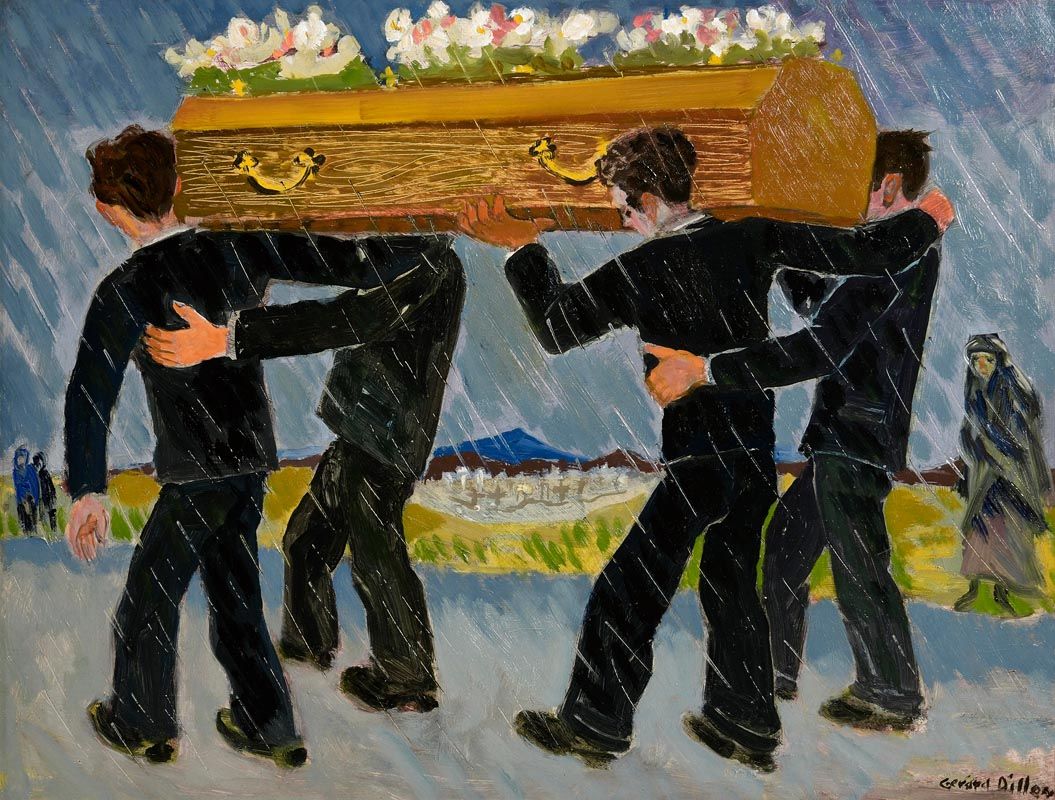
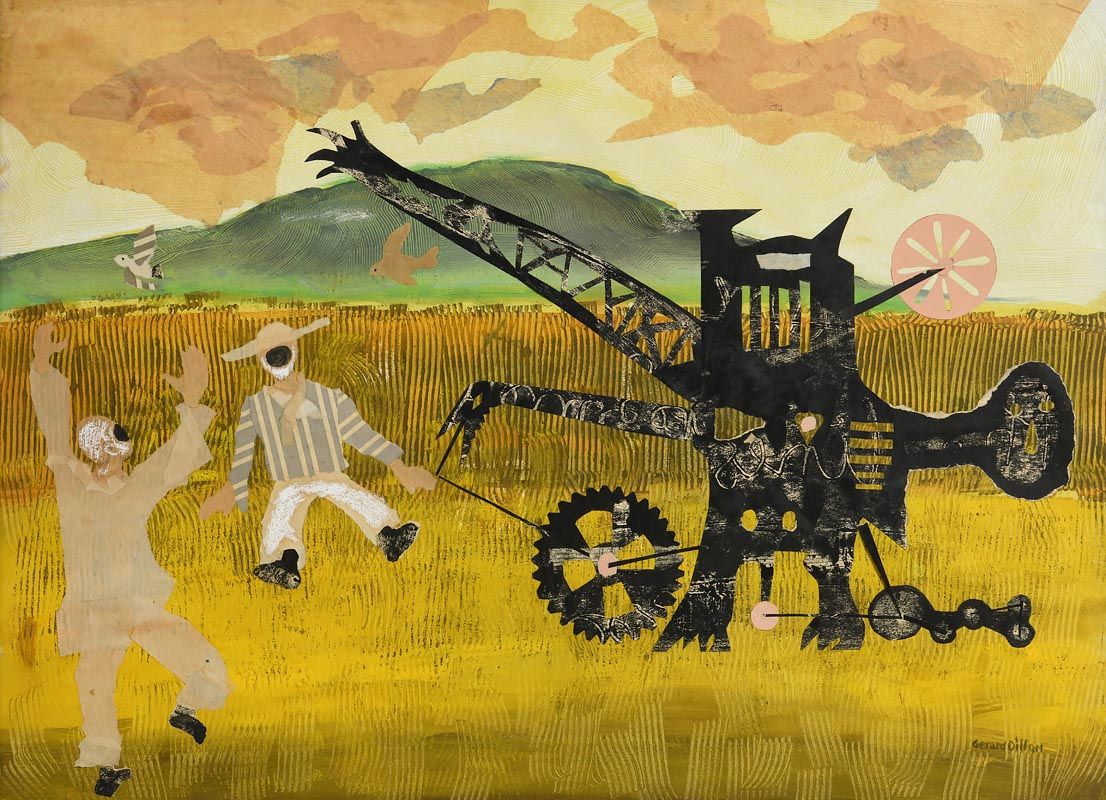
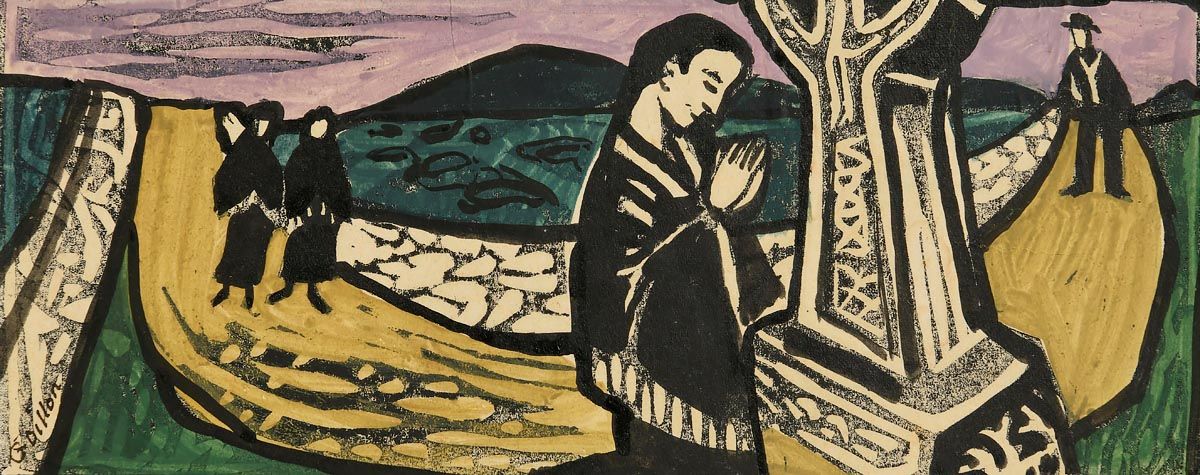

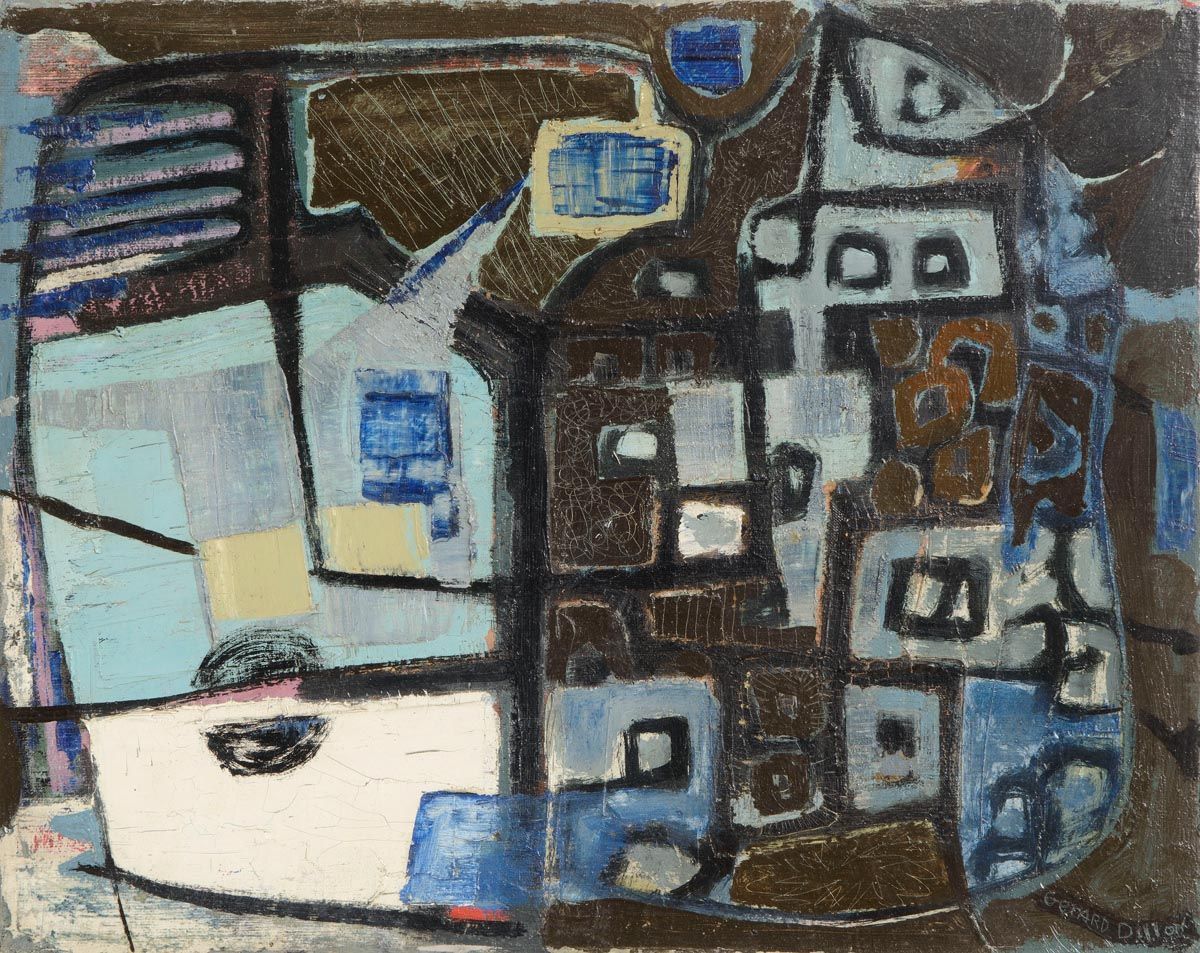
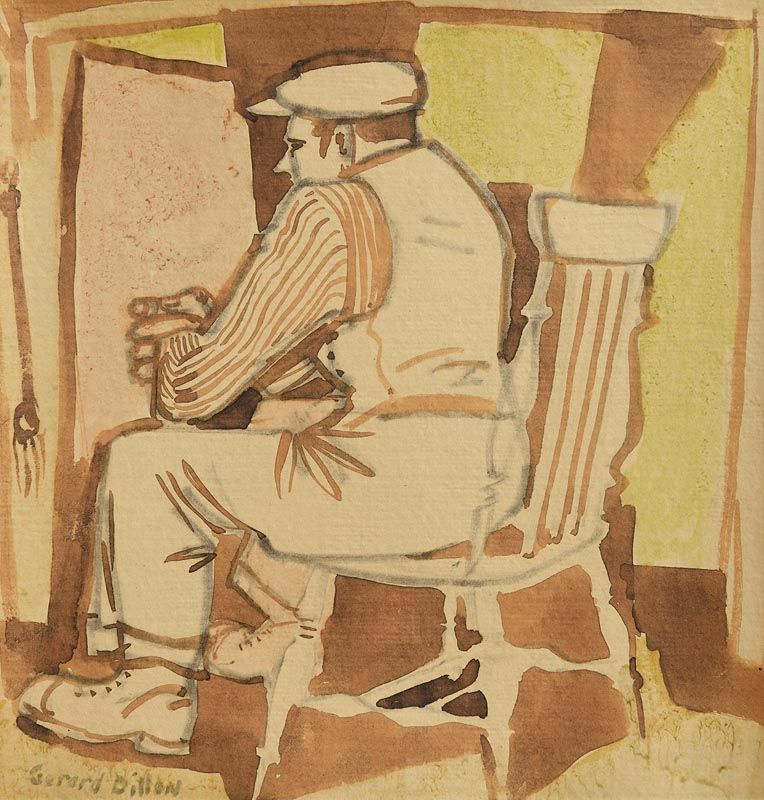

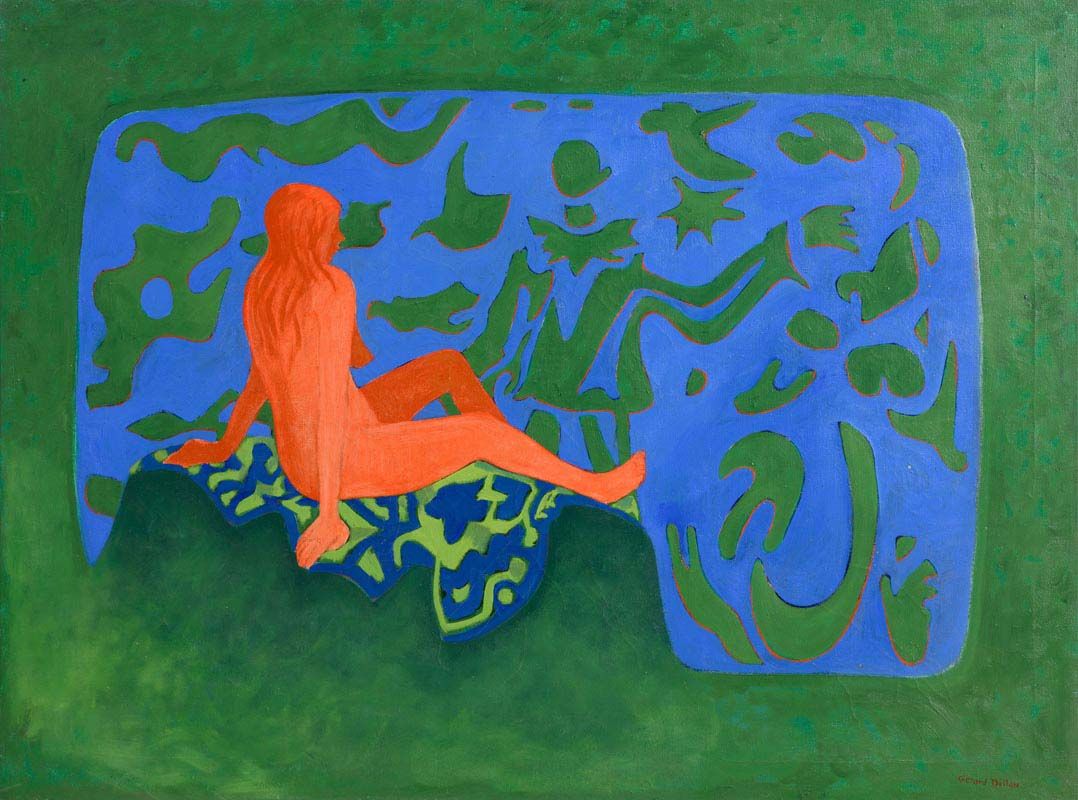
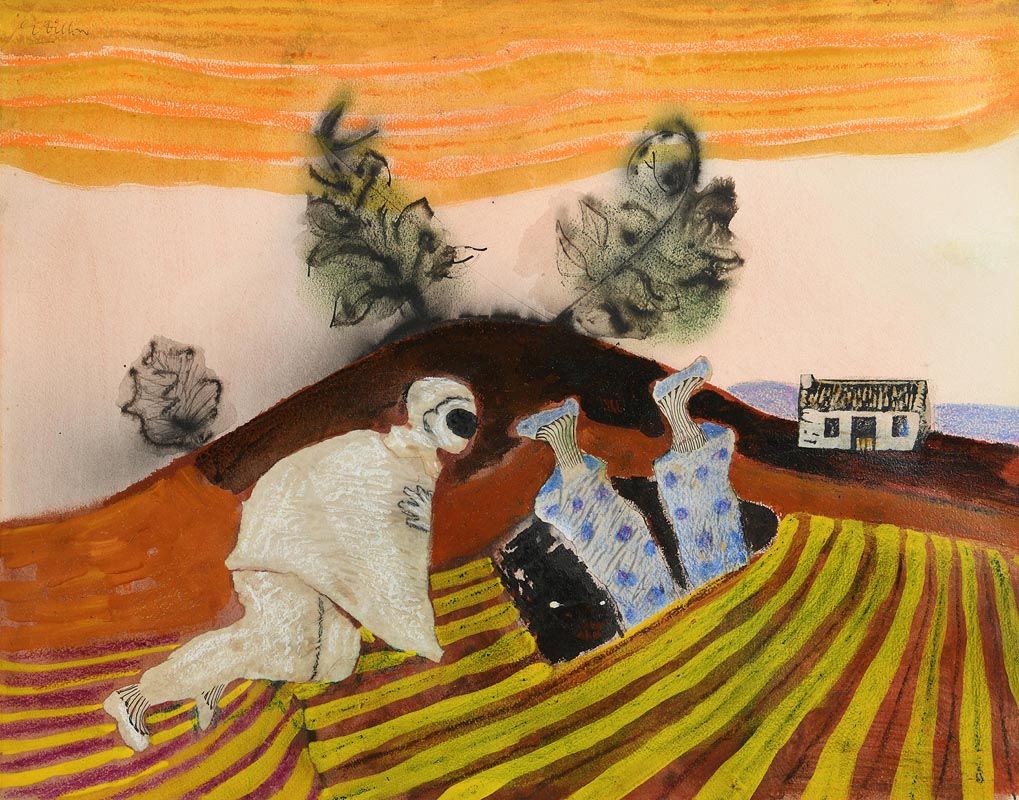

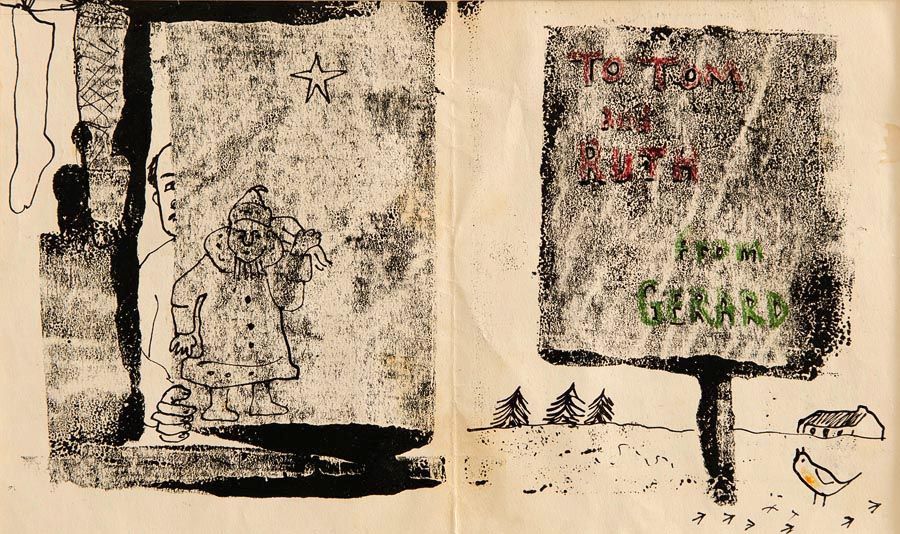
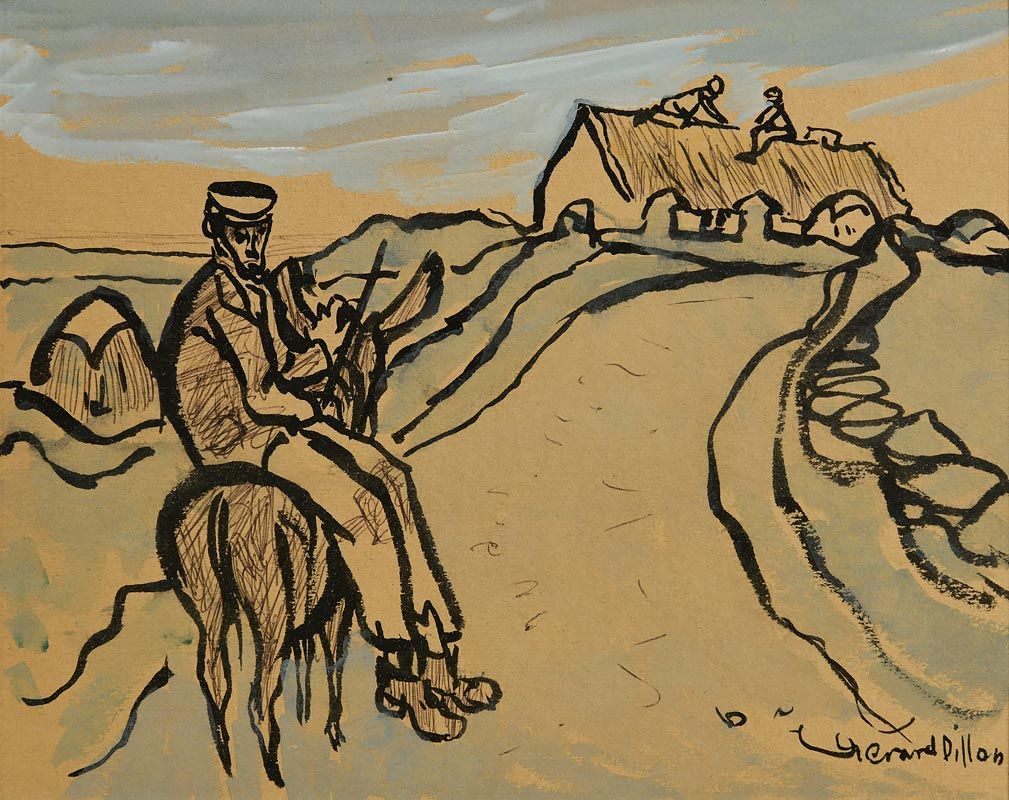
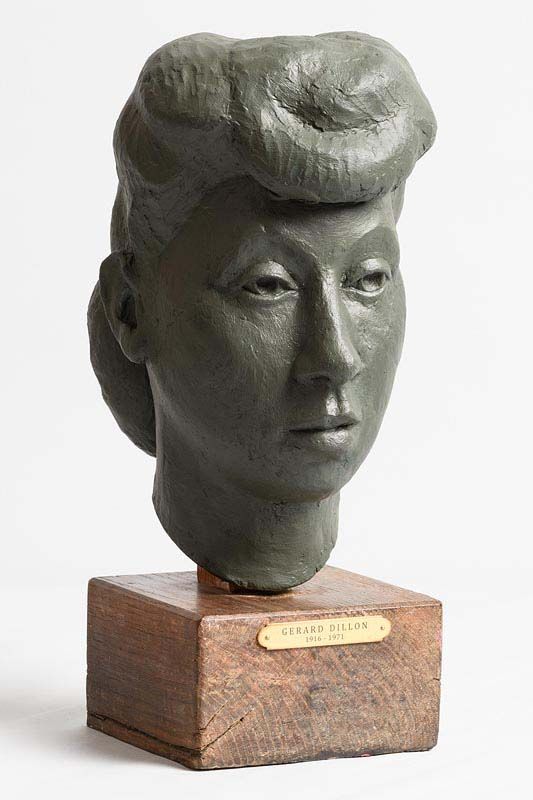
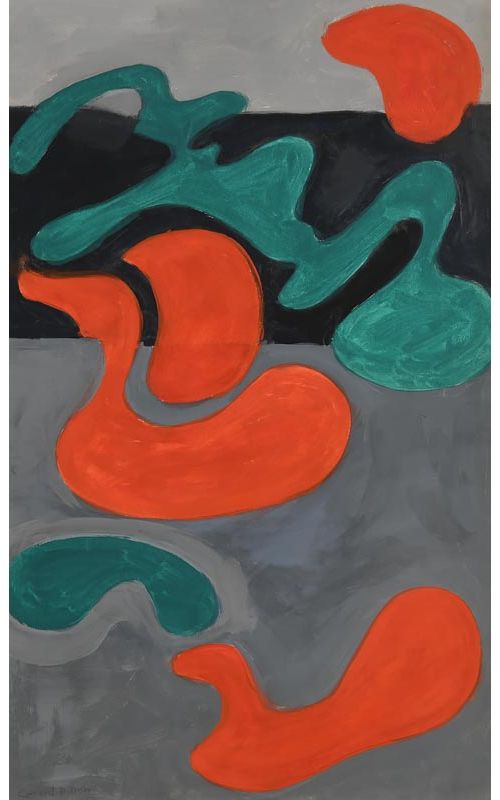

Testen Sie LotSearch und seine Premium-Features 7 Tage - ohne Kosten!
Lassen Sie sich automatisch über neue Objekte in kommenden Auktionen benachrichtigen.
Suchauftrag anlegen